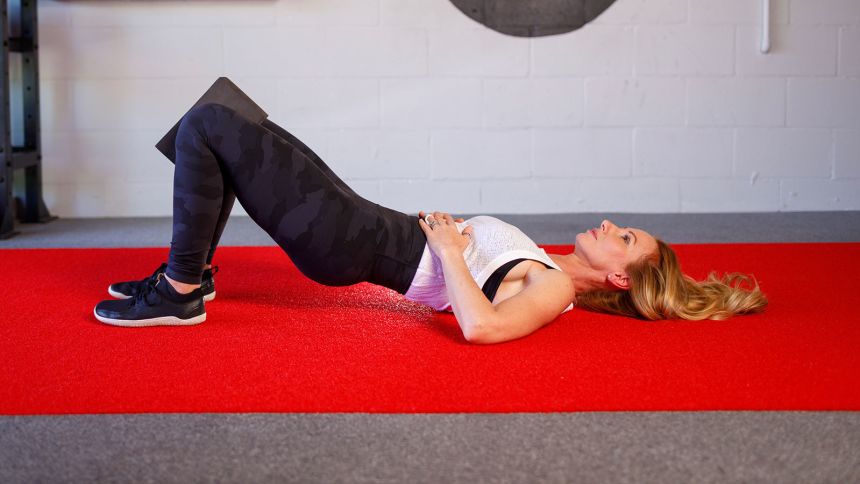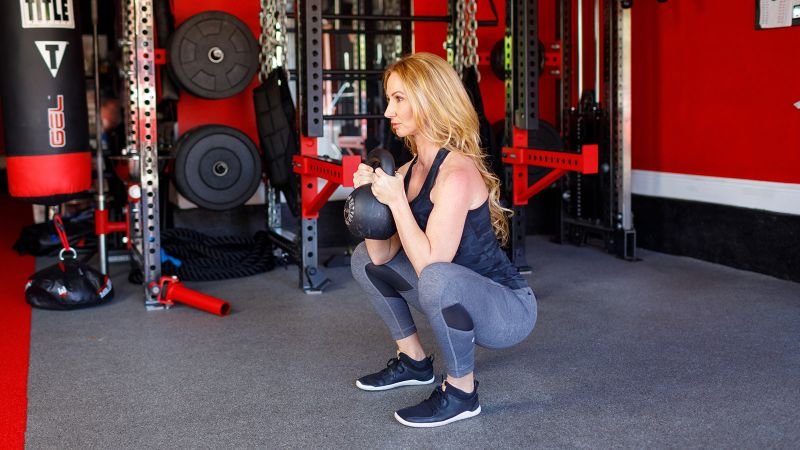EDITOR’S NOTE: Dana Santas, known as the “Mobility Maker,” is a certified strength and conditioning specialist, a mind-body coach in professional sports, and the author of “Practical Solutions for Back Pain Relief.”
In a culture that tends to equate fitness with appearance, glutes often get more attention for how they look than for what they do. But beyond aesthetics, your glute muscles play a vital role in nearly every aspect of movement, posture and pain prevention.
When your glutes are strong and functioning properly, they help stabilize your pelvis, support your spine and generate the power you need for walking, climbing stairs, running, lifting and more. When glutes are weak or underactive, other muscles take over in ways they aren’t meant to, which often leads to discomfort, dysfunction and even injury.
If you spend much of your day sitting or haven’t been training your glutes intentionally, there’s a good chance they’re not pulling their weight. And that could be shifting your body out of alignment and causing avoidable pain.
Why your glutes matter for posture and movement
Your glutes aren’t just one muscle: They are a group of three gluteal muscles called gluteus maximus, medius and minimus. Together, they give strength and stability to the hips and pelvis and help maintain upright posture. This muscle trio also provides power, control and alignment during lower-body movements.
The gluteus maximus, or glute max, is the body’s largest and most powerful muscle. Located in the center of your buttocks, it is responsible for extending your hips. Every time you stand up, walk, lunge or climb stairs, your glute max should be driving the motion.
The gluteus medius, located on the outside of your hip, is crucial for stabilizing your pelvis when you walk, run or stand on one leg. The gluteus minimus sits beneath the medius and attaches deeper into the side of your pelvis. The two muscles work in tandem to support pelvic alignment, lateral movement and internal rotation of the legs.
Weak or underactive glutes are often behind chronic pain and dysfunctional movement. Without strong glutes to stabilize your pelvis and support your spine, other areas of your body are stressed and become more vulnerable to injury.
People who regularly sit for prolonged periods often suffer from low back pain due to posture-related glute weakness. Sitting places the glutes in a lengthened, inactive state that pushes the pelvis forward and puts the lower back at a painfully compressed, mechanical disadvantage, which in turn creates a posture that feels tight, stiff and unstable.
Do you suffer from achy knees or ankles? You may have limited hip extension or pelvic misalignment from glute weakness. This lack of muscle strength alters how you stand, walk or run, putting extra pressure on your knees and ankles.
When any of the three glute muscles aren’t functioning as they should, your body finds other ways to compensate during movement. Your hamstrings (the muscles on the backs of your upper legs), hip flexors (muscles on the front of your hips), quads (muscles on the front of your upper legs) or lower back muscles pick up the slack as a result, increasing strain and decreasing efficiency. Over time, these imbalances and corresponding poor movement patterns contribute to chronic pain, tension and increased injury risk.
Even if you exercise regularly, you might not be activating your glutes effectively during workouts. That’s why intentional training that prioritizes proper activation, strengthening and mobilizing is key.

If you suspect your glutes aren’t doing their job, watch for these signs:
• You feel most lower-body exercises, like squats and lunges, in your quads or lower back instead of in your glutes.
• You struggle to maintain balance during single-leg movements.
• Your knees cave inward when you squat or lunge.
• You have recurring tightness in your hip flexors, quads or hamstrings.
• You experience lower back or knee pain with regular activity.
To test your glute activation, try this simple glute bridge:
Lie on your back with your knees bent and feet flat on the floor. Press through your heels to lift your hips. If you feel the effort mostly in your lower back or hamstrings — not in your glutes — your glutes may not be activating properly. Poke a finger or two into the muscles of your glutes on each side to check for activation. If your touch is not met with any underlying feeling of tension, that’s a sure sign your glutes are under-functioning.
How to retrain and strengthen your glutes

The good news is that with consistent, targeted effort, you can reawaken your glutes and regain function. To that end, zero in on these three essential components: activation, mobility and strength.
1. Focus on intentional activation.
Before jumping into traditional strength exercises, reinforce your ability to activate your glutes. To start, use the same bridge position from your glute testing, but turn it into an activation exercise. Here’s how:
Lie on your back with your feet hip-width apart and a block or towel between your knees.
Exhale fully to engage your core and press through your heels as you lift your hips 4 to 6 inches off the floor. Hold at the top for a count of five seconds, squeezing your glutes without arching your back. Inhale as you lower down, slowly and with control. Repeat 10 to 12 times.
2. Restore mobility and alignment.
Tight hips often accompany weak glutes. Targeted hip mobility drills such as the three-way hip flexor release can help open up your hips and position your pelvis to engage your glutes more effectively.
3. Strengthen through compound movements.
Once your glutes are activating well, incorporate compound exercises that strengthen these muscles through functional ranges of motion. Prioritize quality over quantity, choosing three to four exercises that train your glutes in multiple directions with at least one single-leg movement. These could include squats, hip thrusts, step-ups, single-leg deadlifts, step-back lunges, lateral lunges or lateral monster walks (with or without a band). Do 10 to 12 repetitions of each exercise for three to five rounds. Start with body-weight exercises, and add resistance with weights only if and when you feel you have perfected your form and are ready to progress.
Ideally, add glute-focused training to your workouts two or three times per week, warming up with the glute bridge activation exercise and following up with one or two hip-opening mobility exercises and then your strengthening exercises. Taking this approach will help you safely build strong glutes that support better posture and pain-free movement in daily life.
Remember, glute training isn’t just about having a better-looking backside — it’s about creating a powerful, mobile and resilient body. Whether you’re working out, chasing your kids or simply moving through life, your glutes are behind you doing the heavy lifting, so it pays to give them the attention they deserve.
Sign up for CNN’s Fitness, But Better newsletter series. Our seven-part guide will help you ease into a healthy routine, backed by experts.


